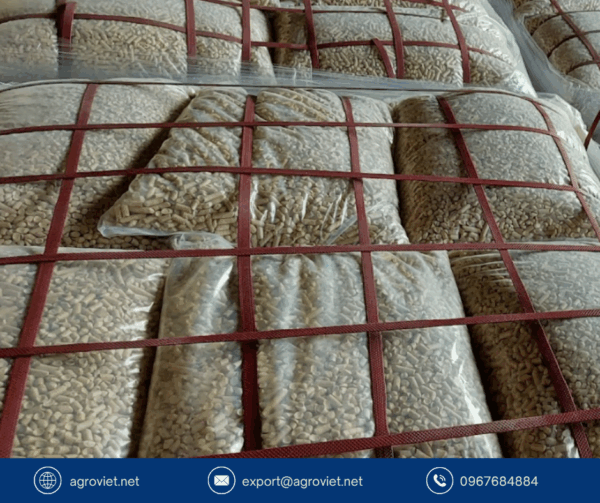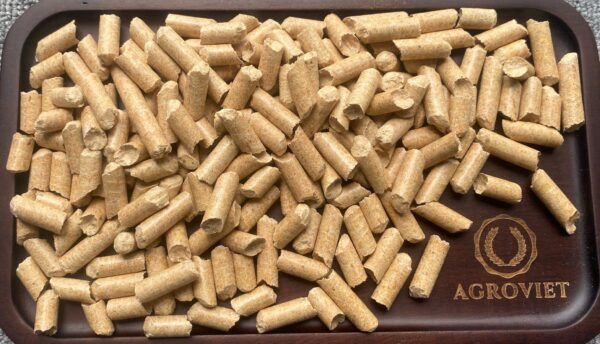Introduction
Pine Wood Pellets are increasingly recognized as a leading renewable energy solution, blending cost-effectiveness with significant environmental advantages. As fossil fuel prices, such as fuel oil (FO) and coal, continue to climb and concerns about climate change intensify, Pine Wood Pellets offer a sustainable alternative that meets both economic and ecological needs.
This article provides a detailed cost-benefit analysis of Pine Wood Pellets compared to fuel oil and coal, guiding businesses and households toward informed energy decisions.
What Are Pine Wood Pellets?

Pine Wood Pellets are a biomass fuel derived from pine wood, a renewable resource widely available in Vietnam. The production process involves grinding pine wood, drying it, and compressing it into small pellets, typically 6-8mm in diameter and 10-50mm in length, with a moisture content below 10%. These pellets deliver a high calorific value of approximately 4,600-4,800 Kcal/kg, maintain low ash content under 1.5%, and ensure stable combustion, making them highly suitable for heating, power generation, and industrial thermal applications.
Cost Analysis
The cost advantages of Pine Wood Pellets are substantial when compared to fuel oil and coal. Research shows that Pine Wood Pellets cost approximately 42-45% of fuel oil and 76-79% of coal for equivalent heat energy.
Priced at around 2,500-3,500 VND/kg in Vietnam, equivalent to 100-150 USD/ton, they are significantly more affordable than fuel oil, which fluctuates between 15,000-20,000 VND/liter or 600-800 USD/ton due to volatile global oil markets. Coal, priced at 4,000-6,000 VND/kg or 160-240 USD/ton, also remains more expensive per unit of heat energy.
Additionally, Pine Wood Pellets reduce operating and maintenance costs due to their low ash content, which minimizes boiler maintenance and waste disposal expenses. In contrast, coal’s 5-10% ash content and fuel oil’s sludge production lead to equipment corrosion and higher maintenance costs. Both fossil fuels also require costly emission treatment systems to comply with environmental regulations, further increasing their operational expenses.
Environmental Benefits
Pine Wood Pellets stand out as a carbon-neutral fuel, emitting far less CO2 than fuel oil and coal, as the CO2 released during combustion is balanced by the CO2 absorbed during pine tree growth. This reduces the need for expensive emission treatment and ensures compliance with international standards like ENplus and FSC.
Conversely, fuel oil and coal generate significant CO2, SO2, and other pollutants, necessitating costly filtration technologies to meet stringent environmental regulations, particularly in markets like the EU. By choosing Pine Wood Pellets, users contribute to reduced greenhouse gas emissions, supporting global efforts to combat climate change while avoiding potential environmental penalties.
Performance and Efficiency

The high calorific value and stable combustion of Pine Wood Pellets optimize performance across industrial boilers, heating systems, and thermal power plants, delivering twice the efficiency of fuel oil due to their low moisture content. Unlike fuel oil and coal, which suffer from energy losses due to moisture or impurities, Pine Wood Pellets provide consistent and reliable energy output, making them a preferred choice for applications requiring high thermal efficiency.
Practical Advantages
Pine Wood Pellets offer unmatched practicality and convenience. Their uniform size simplifies transportation, storage, and use in automated combustion systems, reducing logistics costs compared to bulky coal or fuel oil, which requires specialized storage tanks.
Beyond energy applications, Pine Wood Pellets serve as effective animal bedding in agriculture, leveraging their moisture absorption and odor control properties to enhance livestock health. Additionally, their price stability, driven by Vietnam’s abundant pine wood resources, shields users from the volatility of global fossil fuel markets, ensuring a consistent supply and competitive pricing.
Applications
Pine Wood Pellets are versatile, finding applications across diverse sectors. In industry, they power boilers, thermal power plants, and processes such as food processing, distillation, and paper production. In households, particularly in cold climates like the EU, South Korea, and Japan, they provide a cost-effective and health-safe solution for heating systems. In agriculture, Pine Wood Pellets are used as bedding material, reducing bacteria and improving animal welfare, making them a multifunctional resource.
Conclusion

Pine Wood Pellets deliver exceptional economic benefits, costing 40-60% less than fuel oil and coal, while serving as a green energy solution that minimizes greenhouse gas emissions and protects the environment. With renewable raw materials, high efficiency, and compliance with international standards, Pine Wood Pellets are an ideal choice for businesses and households seeking to optimize costs and embrace sustainability. Make the switch to Pine Wood Pellets today to unlock low costs, superior performance, and a sustainable future.
Read more: https://vietnambestwood.com/general/winter-heating-wood-shavings-agroviet/
